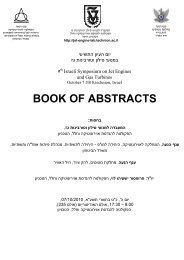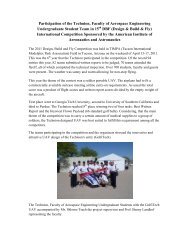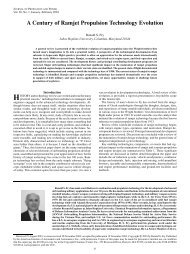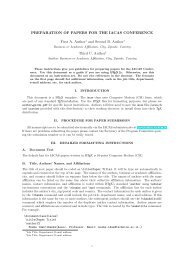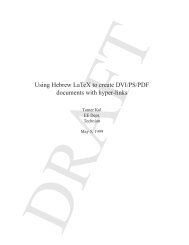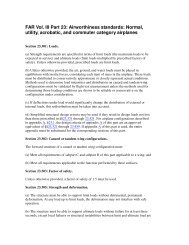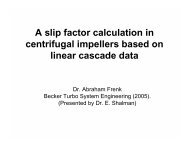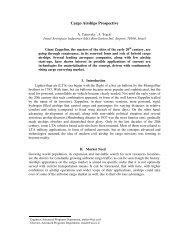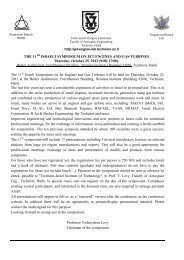Helicopter Sizing by Statistics - Faculty of Aerospace Engineering
Helicopter Sizing by Statistics - Faculty of Aerospace Engineering
Helicopter Sizing by Statistics - Faculty of Aerospace Engineering
Create successful ePaper yourself
Turn your PDF publications into a flip-book with our unique Google optimized e-Paper software.
AHS Forum 58, June 2002<br />
The Analysis Methodology (cont.)<br />
yi yi<br />
R<br />
y y<br />
e<br />
N 2<br />
∑e<br />
− j<br />
2 = 1−<br />
i=<br />
1<br />
N 2<br />
∑e<br />
i − j<br />
i=<br />
1<br />
yi y ye i<br />
Multiple Regression Correlation Measure:<br />
where are the data base values, is the averaged data base value, and are the estimated<br />
values.<br />
Hence, R = 1 stands for a perfect correlation, while in most cases the minimal value <strong>of</strong> R was<br />
set to be above 0.9 in order to conclude that a correlation is <strong>of</strong> a value and represents a genuine<br />
trend.<br />
The Database<br />
The database used is the one stored in RAPID/RaTE (Rotorcraft Analysis for Preliminary<br />
Design / Rand Technologies & <strong>Engineering</strong>) - a desktop rotorcraft analysis package .<br />
RAPID/RaTE is designed to model general rotorcraft configurations, conventional helicopters and<br />
tilt-rotors. RAPID/RaTE performs trim response, mission analysis, vibration analysis, stability<br />
analysis, and both flight mechanics and aeroelastic simulations.<br />
<strong>Faculty</strong> <strong>of</strong> <strong>Aerospace</strong> Eng., Technion - I.I.T.<br />
4






